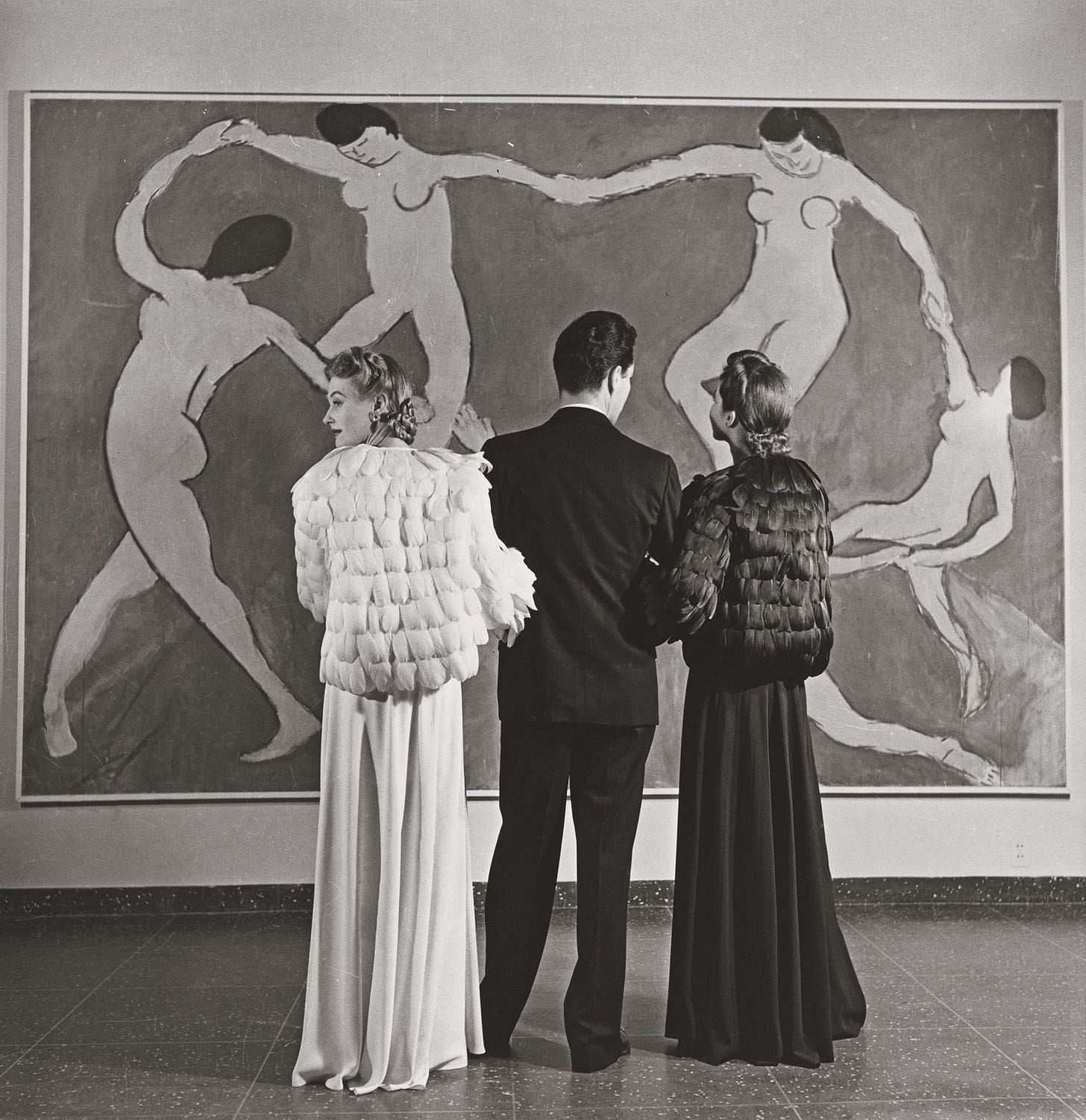As I move my archive of guides onto Substack, I’ll be sending out an additional Get Curious email once or twice a month. These themes have all been updated, so even if they’re familiar, hopefully even my original subscribers will find something new to spark some wonder.
Quotable
“. . . [the artist] has to look at everything as though he saw it for the first time. He has to look at life as he did when he was a child...” —Henri Matisse
Don’t be fooled: this guide is not about art history or art theory; children don't need to learn about art. They need to experience the process of making art. The chance to be artists is what makes art meaningful for them. Whether or not your child is interested in stories about a fellow artist (in this case, Henri Matisse), all kids speak the language of colors, shapes, and play.
I have some interesting links for you, plus a Matisse book list, but if you want to get straight to downloading the guide, scroll down and you’ll find it at the end of this email.
Looking for a gift that doesn’t require wrapping paper and waiting in line at the post office? Give the gift of Fort Bramble!

Interesting things to read, watch, or listen to.
To spark your wonder, here are some fun and/or interesting things I came across as I researched and created this month’s guide.
➵ Why Matisse for a Discovery & Play Guide? Because his work is endlessly playful and fun, which makes him the perfect avenue for children and their grown-ups to enjoy art together. As Peter Siedjhal writes in “Shapes of Things” for The New Yorker, “Anyone who doesn't love it (Matisse's art) must have a low opinion of joy.”
➵ As an artist, Matisse strove to do what children do naturally: “To look at things individually, and… experience sights personally, evocatively, provocatively. They see the spirit of things.” A lovely piece about the child’s eye and Matisse’s art. (Christian Science Monitor, March 1980)
➵ Along these same lines: “What really struck me was Matisse’s journey from mastering all the academic skills to unlearning everything to create his own art,” says Eana Kim, curatorial fellow in the Department of Painting and Sculpture at MoMA. “He really tried to dig into and explore the fundamental elements, like forms and colors. He was looking into something more essential to create something pure. I needed to follow that path.” Eana also describes some of her own journey of unlearning, including painting with her non-dominant hand, and drawing with her eyes closed.
➵ In working on this guide, I discovered that something was missing from my bucket list: a visit to the Matisse Chapel (Chapelle du Rosaire) in Vence, France. It was the last great work of Matisse’s life, created over a span of four years in his late 70’s, and he considered it his masterpiece. “Ostensibly a place for nuns to pray, it would also be a place of peace for all humanity. Something which would sum up in one space, art’s power to heal the wounds of a darkened, fallen world,” (BBC Civilisations series (episode 7). I can only imagine what it must be like to step inside a three-dimensional version of Matisse’s art - I loved reading this Washington Post piece from art critic Sebastian Smee where he describes being utterly “undone” by the space. More information and images here.
A poem.

The Cut-Outs of Henri Matisse by Patricia Coburn I feel through color, said Matisse, so here the painter sits, barefoot in wheelchair, dark pajamas, the right hand clips away. Soon, it will all be collage. Fuchsia horses, lilac leaves, torsos of blue, lemon stars, hearts cerise. A pair of scissors—a wonderful instrument, he says. Fall-away scraps of feeling surround his nude toes. from the King County Metro Transit Poetry on Buses competition (1999)
6 books about Matisse (plus 2 more) to read with your kids.
Biographies for children are often dry and, well, awful. Like reading a nicely illustrated Wikipedia page. Thankfully there are a handful of lovely and beautifully written picture books on Matisse, and I’ve included them here, along with a couple others that relate to this month’s guide. No dry, boring books for you, my friend!
Matisse’s Garden by Samantha Friedman, illustrated by Cristina Amodeo
The Artist Who Painted A Blue Horse by Eric Carle
Matisse: Dance for Joy by Susan Goldman Rubin
A Bird or Two: A Story About Henri Matisse by Bijou Le Tord
The Iridescence of Birds: A Book About Henri Matisse by Patricia MacLachlan, illustrated by Hadley Hooper
Art by Patrick McDonnell
oooh! Matisse by Mil Niepold
Henri’s Scissors by Jeanette Winter
I’ve linked to Amazon for the sake of convenience, but I love AbeBooks, ThriftBooks, and eBay for finding used copies of books. And of course nothing beats your local public library.
Quote of the Day
“Art is a place for children to learn to trust their ideas, themselves, and to explore what is possible.” —MaryAnn F. Kohl
Henri Matisse Guide
The Matisse Discovery & Play Guide is full of snacks, poems, videos, songs, games, and simple activities to do with your children. It’s a PDF, so you can print it out if you prefer to go analog, but the formatting is intended to make it easy to use on your mobile device.





